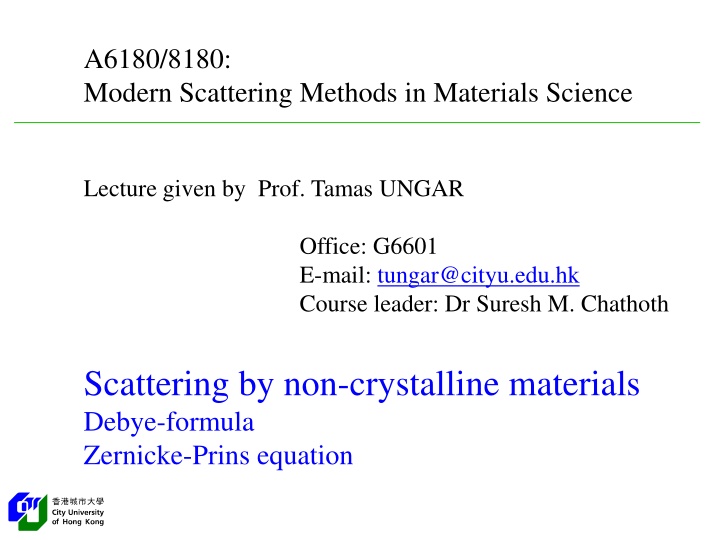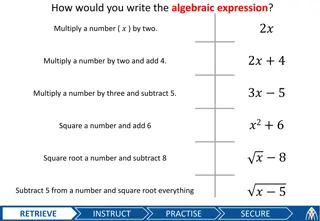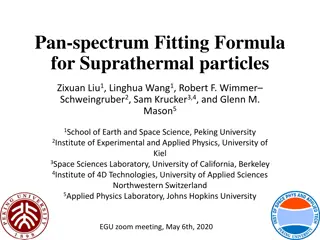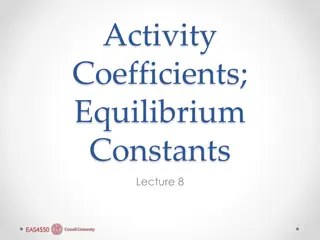
Modern Scattering Methods in Materials Science
Explore the fascinating world of modern scattering methods in materials science through lectures by Prof. Tamas UNGAR. Topics include Debye formula, Zernicke-Prins equation, X-ray diffraction, and more. Discover the principles behind scattering by non-crystalline materials and the intricate details of atomic interactions in different substances.
Download Presentation

Please find below an Image/Link to download the presentation.
The content on the website is provided AS IS for your information and personal use only. It may not be sold, licensed, or shared on other websites without obtaining consent from the author. If you encounter any issues during the download, it is possible that the publisher has removed the file from their server.
You are allowed to download the files provided on this website for personal or commercial use, subject to the condition that they are used lawfully. All files are the property of their respective owners.
The content on the website is provided AS IS for your information and personal use only. It may not be sold, licensed, or shared on other websites without obtaining consent from the author.
E N D
Presentation Transcript
A6180/8180: Modern Scattering Methods in Materials Science Lecture given by Prof. Tamas UNGAR Office: G6601 E-mail: tungar@cityu.edu.hk Course leader: Dr Suresh M. Chathoth Scattering by non-crystalline materials Debye-formula Zernicke-Prins equation
the scattered intensity in the most general form: where summation has to be done over all the atoms within the illuminated region, with the difference vector rmn = rm rn : Warren, X-ray Diffraction
with , the average for each exponential term: = = = after summation Debye-formula Warren, X-ray Diffraction
gas of polyatomic molecule: where the last term on the right-hand side if the modified Compton scattering and N is the number of molecules in the illuminated volume. Warren, X-ray Diffraction
carbon-tetrachloride CCl4: + + Warren, X-ray Diffraction
Scattering by liquid or non-crystalline materials if there is only one kind of atom, the scattered intensity will be: we introduce a density function: where is the number of atoms in dVn at rnm. With this the summation can be replaced by the integral: Warren, X-ray Diffraction
Scattering by liquid or non-crystalline materials with introducing the average density, a: + for a fixed distance rmn=r let , where the average is over all m(r) within the sample at the distance r from any atom in the sample. Warren, X-ray Diffraction
Scattering by liquid or non-crystalline materials for a fixed distance in the sample, where the average is taken over all m(r) within the sample at the distance r from any atom. With this, in the integral can be replaced by: Warren, X-ray Diffraction
Scattering by liquid or non-crystalline materials For a mon-atomic amorphous sample the term goes to zero at distances of r larger than a few atomic distances. Since the volume S is considerably larger than a few atomic distances the summation over m can be replaced by the number of atoms in S, i.e., N. Warren, X-ray Diffraction
Scattering by liquid or non-crystalline materials if there is no preferred orientation in the sample, will have spherical symmetry and can be written as: Warren, X-ray Diffraction
Scattering by liquid or non-crystalline materials if there is no preferred orientation in the sample, will have spherical symmetry and can be written as: Using the notations in Fig. 10.1 and the variable we obtain: = Warren, X-ray Diffraction
Scattering by liquid or non-crystalline materials Warren, X-ray Diffraction
Scattering by liquid or non-crystalline materials after some rearrangements: + next we analyze the integral in the third term: Warren, X-ray Diffraction
Scattering by liquid or non-crystalline materials since a is a constant, the integral can be written as: 2 ? ? ?0??dVn ? ?? the integral here is the Fourier transform of the form-factor of the volume of the sample within S. If S is macroscopic then the integral is close to a delta function around the direct-beam direction, and therefore has no effect on the diffraction experiment. The third term on the right-hand site of Ieu can be omitted. Warren, X-ray Diffraction
Scattering by liquid or non-crystalline materials the scattered intensity per atom will become: We introduce the abbreviation: , and do some rearrangements: Warren, X-ray Diffraction
Scattering by liquid or non-crystalline materials with taking into account the rules of Fourier transformation: the inverse Fourier transformation provides: and with some rearrangements: Warren, X-ray Diffraction
Scattering by liquid or non-crystalline materials we arrive at the Zernicke-Prins equation: 4 r2 (r) is the radial-distribution-function (RDF) Warren, X-ray Diffraction
Scattering by liquid or non-crystalline materials Warren, X-ray Diffraction
Scattering by liquid or non-crystalline materials Warren, X-ray Diffraction
Scattering by liquid or non-crystalline materials Warren, X-ray Diffraction






















